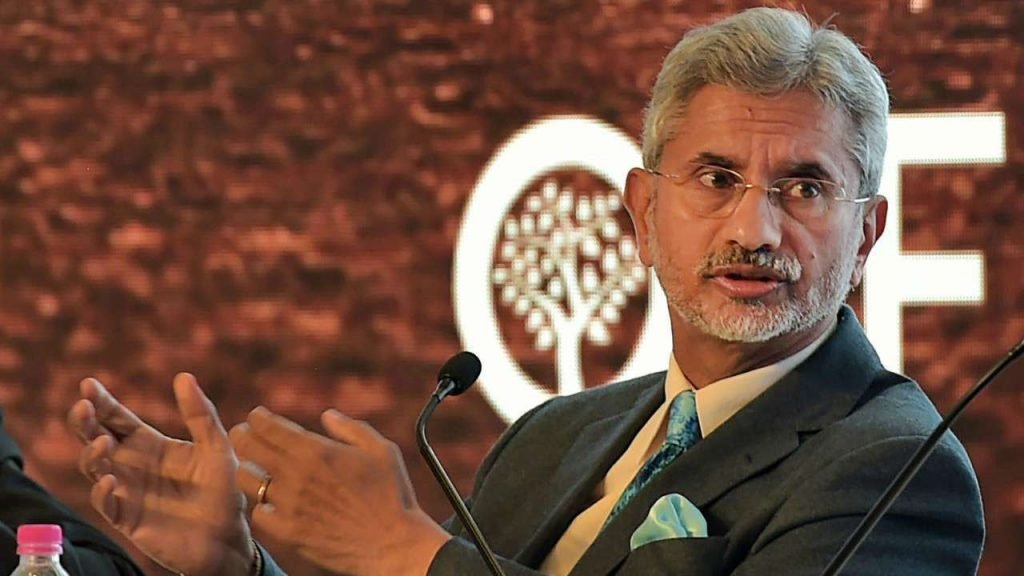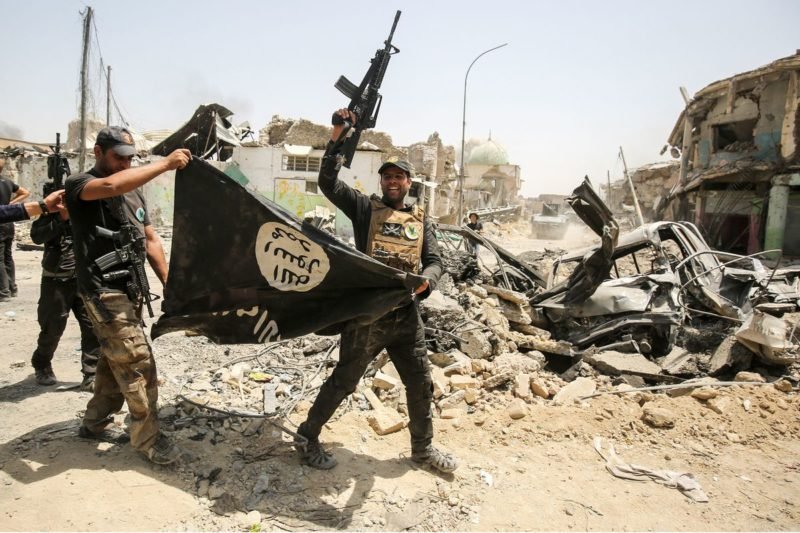[Book Review] The India Way: Strategies for an Uncertain World

In the present context of world politics, the global community is witnessing a significant paradigm shift in the world order. Countries are repositioning their stance in the global architecture of political hierarchy. The upward surge of the Asian continent, the reinvention of Russia, the economic potentials of Africa and the inward-looking policy of America in the 21st century have reconfigured the overall global geo-strategic matrix. Moreover, the tectonic shift in technology and politics has ensured that power can no longer be considered purely in terms of ‘hard’ military and economic capabilities but needs to account for cyber, digital and physical connectivity and technological research and development.
Against this backdrop, the incumbent Indian Foreign Minister, Dr S. Jaishankar, has authored The India Way: Strategies for an Uncertain World to shed light on the new global political conditions and norms. Spelling out the winds of change in the workings of contemporary international relations, the author alludes to the fact that international interactions at the bilateral and multilateral levels have moved forward from a world of agreements towards a world of convergences. The Foreign Minister’s acumen and diplomatic experience enable the reader to identify key determinants that affect and influence the dynamic interplay between state actors which consequently determine the trajectory and outcome of contemporary politics. Additionally, he provides a ringside view of India’s political disposition in the international forum and puts forward a vision for how India can achieve its destiny in the coming years. In the process, he lists out the various challenges that lie ahead for New Delhi and proposes policy solutions to overcome them.

The clear central thesis that reverberates throughout Jaishankar’s book is the need for India to adopt a more pragmatic and realist based foreign policy to subsist and to engage with the changing world. To make his case, he refers to some of the most significant events in India’s modern history to indicate how its typically complacent and defensive disposition often compromised the country’s national interests, due to its failure to anticipate, identify, comprehend, and analyse external events. As a result, India has always been reactive rather than being proactive which naturally proves to be an ineffective strategy against the present fluid and uncertain state of world affairs. The author’s prescription for this predicament is to have India disengage from its traditional “moralpolitik” (p.4), stance and cast aside her erstwhile “soft-state” (p.50), disposition and instead adopt a more pragmatic, muscular form of “realpolitik” (p.5), foreign policy. This will allow India to safeguard her regional equities and enable her to advance her global interests as the country aspires to play an instrumental role in international relations.
Jaishankar is of the firm belief that the world has become more dynamic in terms of change and is experiencing tremendous turmoil apart from the shift in the traditional understanding of power. The new facet and constitutional attributes of power include, the access of information and technology, greater physical connectivity, and trade. Moreover, the emergence of new regional actors entering into the fray has intensified the global power competition, resulting in the creation of a multipolar configuration. Not only do rival states compete with one another for power and dominance but there exists an implicit competition between allied partners as well. Given this scenario, the author articulates a three-prong strategy that could help steer a new course for India’s diplomacy. This includes refraining from forming alliances, exploiting conflicts which are intrinsic to the multipolar system, and accepting and exercising contradictory policies. As a basis for a new Indian strategic culture, Jaishankar draws upon the Mahabharata. The author carefully recounts snippets of the epic while attempting to draw lessons from the past. In doing so, he throws light on how ancient India was able to balance its pursuit of power accrue, while, concurrently maintaining its ethical values and responsibilities (p.48).
The most prominent problem that the book is concerned with is how -the rapid transformation in the international order caused by China’s rise and the relative decline of the US has impacted the political and diplomatic outlook of India and other Asian powers. Jaishankar contends that the fluid state of affairs and the changes in the international order have caused many of the fundamental assumptions and principles of international relations to be revisited, also stressing that India’s strategy must also be amended in order to harness greater capabilities and responsibilities. Specifically, he argues that calculated risk-taking is essential to the realisation of one’s potential and a nation like India, with its great power aspirations, cannot shy away for too long from taking a firm stand in challenging situations and times of crises.

The author therefore maintains that it is imperative that New Delhi puts behind its entrenched dogmas and moves forward with time when addressing the transmuting international system. Applying his three-prong strategy, the author gets the ball rolling on how India should manage its external relations particularly vis-à-vis with China. He suggests how India could deal and work mutually with the latter despite their existing differences and border tensions. He also reminds the audience of the fraternal rapport that the two countries shared in the past, by evoking the historical and cultural links. The author posits that the manner in which the two powers operate in the coming decades will determine the future course of the Asian century. Following this thread of argument, he further proposes different dimensions of strategic partnerships with the regional members to ensure the restoration of the balance of power in Asia against China’s rise and domination.
Having discussed the concept of change in the international system, the author deliberates the same on the domestic level. He opines that the ‘Indian Street’ has fared better than the ‘Lutyens’ Delhi’ (reference to the area where the Indian elite reside in the national capital built by Sir Lutyens during the colonial era) in accepting the phenomenon of change (p.109). The people of India have been receptive and smart enough to acknowledge the notion of change which has enabled them to make better assessment of their investments and opportunities abroad. Despite the lack of a formal training and understanding of geopolitics, the common Indian’s knack for comprehending the complexities of diplomacy has proven rather accurate (p.110). This instinctive foresight has driven him to make choices in his best interest, well ahead of the policy changes made by the Indian statecraft. This has entailed the development of a new mindset in the country that approaches foreign policy from a realist perspective-pragmatism.
To prevail in a transactional world where states are solely focussed on maximising their individual interests, there is no scope for ‘political-romanticism’ (p.4). However, the rules of engagement are more pragmatic, hard-lined and exploitative. Hence, for India to succeed in the prevalent international political environment, it is imperative that she shed her pre-set dogmas and embrace realism as her mantra of success.
Conclusion
This book offers an insight into the prevailing trajectory of India’s foreign policy as well as the South Block’s outlook towards global politics for both the global audience and for the Indian public. What sets this work apart from the rest is that it pronounces the overarching strategy of India’s foreign policy by the very man who guides and manages India’s external affairs. Not only has the author coherently placed on record the complexities involved in India’s relations with its neighbourhood and with major powers, but has unequivocally drawn the reader’s attention towards the importance of departing from the traditional diplomatic practice of Non-Alignment towards a more engaging and proactive form of multilateralism and “plurilateralism” (p.35) to safeguard and advance India’s national interests in the prevailing context of a multipolar world, as opposed to a bi-polar world where alliances was the accepted practice. In contrast to the former traditional understanding of nationalism based on the principles of non-violence and the Nehruvian idea of Non-Alignment, the author impresses upon his audience the shift in India’s strategy that is inspired by its ethnic nationalism drawn from the Hindu culture along with the teachings from the Mahabharat. Setting a new template of foreign policy which is innately driven by realism, not only has India been able to successfully promote itself as an influential actor in the international community but has been able to significantly elevate its global image as a potential leader.
To cope and sustain with the laws of change and uncertainty that are inherent in the current world, developing a strategic autonomy will serve in India’s best interest and will enable New Delhi to make hard choices that will converge its domestic dreams with its global aspirations as a world power. However, in order to effectively translate this narrative into a reality, there is a need to formulate a robust ecosystem that would facilitate this transition. For this to happen, India must learn to take the bull by the horns and turn the events around so that she can victoriously stand tall in the international arena.


















